
27 minute read
Machine safety myths
TEN COMMON MISCONCEPTIONS TO WATCH OUT FOR
Many machine safety-related misconceptions continue to be widespread in manufacturing.
Although the consequences of inadequate or misplaced machine safety practices can be severe, there are, nonetheless, a number of misunderstandings in existence that put many facilities — and their employees — at risk of accidents. Lack of safety knowledge and proper training can lead to poorly functioning safety systems. This article examines the causes of machine safety misconceptions to help manufacturers better understand this important topic.
What trends are currently causing a deficit in machine safety knowledge?
Misconceptions about machine safety are currently on the rise — in part because older workers are retiring in large numbers with few mid-career workers to inherit their expertise. This trend is causing many industrial facilities to lack the engineering expertise required to ensure that their machines meet modern safety standards.
In addition, an increase in the prevalence of newer, fully automated solutions may in some cases lead to complacency, as manufacturers believe (mistakenly) that their new systems must be compliant. This brings us to our first machine safety myth. Myth 1: If a machine is brand new, then it must be compliant This is false. Generally, OEMs have no legal obligation to include safety measures on their machines. This is usually due to cost considerations, as safety products and compliant solutions may make the OEMs less competitive in the market. Furthermore, safety usually isn’t a core a core competency of these companies, so they avoid designing safety solutions that they have little expertise in. All of this means that safety measures have become the responsibility of the end user.
End users, of course, also face the need to minimise costs. This can unfortunately lead to a tendency to cut corners on a safety system. In some cases, manufacturers worry that safety measures hamper productivity and make processes less efficient.
©stock.adobe.com/au/TMLsPhotoG

Although it’s true that safety systems can slow down some processes, their benefits far outweigh the costs. Poorly designed systems can lead to serious injuries or even death, and there’s no excuse for knowingly putting someone’s life in danger. Furthermore, when it comes to costs, safety measures actually save money in the long run by helping to avoid expensive, traumatic incidents. Although the upfront investment is always a consideration, it shouldn’t deter facility leaders from implementing a solid solution. In fact, if there’s one important myth to debunk in this article, it would be that the cost of safety measures is too high. Myth 2: Safety is too expensive, and it reduces productivity and efficiency by adding extra steps to key processes The costs of an accident — which could be several times the initial investment in safety infrastructure — immediately demonstrates the falsehood of the above statement. These costs include not only fines and workers compensation, but also lost productivity due to poor morale. An on-the-job injury affects not only the injured person, but also the employees who witnessed the accident or learned of it after the fact. The stress of the event and the resentment towards an employer that failed to protect its people — particularly if the employer is found to have knowingly ignored safety standards — is likely to lead to apathy and higher turnover.
To address the effect of safety measures on overall productivity, it’s important for manufacturers to note that safety measures can be designed in ways that don’t impact the efficiency of the machine. An example of this would be an application that uses a safety laser scanner to minimise downtime in areas with collaborative robots. In this scenario, if a worker enters the robot work area, the safety laser scanner will trigger the robot’s reduced speed mode and cause it to slow down to a safe operating level. When the employee steps out of the area, the robot will go back to its faster speed.
Misconceptions about administrative controls and training vs good engineering
Some manufacturers mistakenly believe that they can substitute engineered safety solutions with enhanced training and the implementation of strict guidelines for employee behaviour around dangerous machinery. Although thorough training is obviously beneficial and necessary, the presence of administrative controls alone doesn’t constitute a true safety solution. It’s not enough to simply change the way employees work; there must also be safeguarding measures in place to physically prevent them from entering the hazard zone. This brings us to our third major misconception. Myth 3: Good administrative controls and comprehensive employee safety training can replace good engineering Thinking along these terms can put employees in harm’s way. In the US, for example, the foundation of machine safety consists of a hierarchy of controls published by the National Institute for Occupational Safety and Health (NIOSH), which lists administrative controls and personal protective equipment (PPE) as the least effective ways to mitigate risk. Physically removing the hazard and replacing the hazard are the most effective measures, but these can be impractical. Engineering controls form the middle ground for protecting operators from hazardous machine motion (see Figure 1).
Misconceptions about exemptions for older equipment and smaller companies
Retrofitting a safety system onto legacy equipment can be a challenge, and some manufacturers are under the impression that older equipment doesn’t fall under the same standards as new equipment. They cite the fact that these machines were built before certain safeguarding standards came into existence as justification for their decision not to implement engineering controls. However, the idea that older machines are exempt from safeguarding requirements is a myth that can easily lead to a standards violation and possibly a serious accident.
Figure 1: Hierarchy of safety controls.

Myth 4: Older machines can be ‘grandfathered in’, so they don’t need safeguarding No equipment is exempt from current machine guarding standards, and so-called ‘grandfather clauses’ simply do not exist for machine safeguarding. An exemption does exist under some robot standards, and it applies to a robot’s safety circuit integration. This very narrow exemption has led to some confusion as manufacturers mistakenly interpret it to apply more generally.
The underlying reason for the resistance to retrofitting legacy equipment with current standards-compliant safeguarding is the cost. This concern also relates to another misconception that exemptions exist when there are none, this time with regards to smaller companies. Smaller manufacturers have much less cash on hand than larger manufacturers, so there’s a tendency to believe that the rules don’t apply in the same way. Myth 5: There are machine safeguarding exemptions for smaller companies This is false. All companies are required to safeguard their machines properly and protect the lives and safety of their employees. What may depend on company size is the amount a company is required to pay in case of a safety violation. In general, regulatory agencies see enforcement actions as a way to motivate compliance, rather than simply functioning as punitive measures. Regulatory bodies often have discretion in the nature and size of an enforcement actions. They can issue a warning or a fine, or — in extreme cases — lock out non-compliant equipment. In determining the appropriate level of enforcement, the agencies will look not only at the seriousness of the infraction and whether it’s a repeat violation, but also what would be necessary (within statutory limitations) to motivate the offending company to bring its equipment into compliance.
Misconceptions about identical machines and machines that have been moved
Another way that some companies seek to cut corners is to avoid performing risk assessments on machines that are very similar or that have been moved or modified slightly. This brings us to machine safety myths 6 and 7. Myth 6: When several machines are identical, it’s only necessary to do a risk assessment for one of them This is not necessarily true; it depends on the complexity of the machine. Even seemingly insignificant differences between machines and their positioning relative to one another could change the outcome of a risk assessment. For instance, the addition of a small step to one of several otherwise identical machines could be sufficient to place a worker in harm’s way. Myth 7: If a machine was assessed for risk before it was moved to a new location, there’s no need to do another risk assessment As with the previous myth, this depends on the complexity of the machine. Moving it to a new location could create a requirement
©stock.adobe.com/au/teptong
for a new risk assessment. When assessing access to a hazard on a machine, safety assessors should determine whether an employee can reach around, under, through or over a safeguarding measure to reach a hazard area. When a machine is first assessed in its original location, there may have been a wall or another structure blocking access to part of it. Once it’s placed in a new location, the immediate surroundings may not block access in the same way, giving employees unrestricted access to the hazard. Similarly, the new location may include nearby steps that allow someone to reach over a guard in a way that they couldn’t have done previously.

The more technical aspects of a safety system can also be rife with misunderstandings. Here are a couple of the more frequent ones that have been found during our risk assessments. Myth 8: A gate using a padlock to prevent access is an acceptable and sufficient safety measure This is false. Movable guards providing protection against hazards need to be interlocked to signal the apparatus to stop. Fixed guards should be securely held in place either permanently (by welding, for example) or by means of tamper-resistant fasteners that make it impossible to open the guards without using tools that aren’t readily available to operators on the manufacturing floor. Since the guards must never remain closed without their fasteners, a gate must be fastened shut or interlocked. Myth 9: Performance requirements for safety measures stop at the wire This misconception has to do with the ways in which various energy sources must be safeguarded. Many manufacturers believe that safeguarding is only necessary when the energy source is electrical. As it turns out, all hazardous energy sources need to be ‘single-fault tolerant’, including hydraulic and pneumatic sources.
What to look for in an assessment service provider
Given the sheer number of misconceptions that exist with regard to machine safety, it’s more important than ever for manufacturers to have thorough risk assessments performed on their equipment by a trusted provider. When selecting an assessment service, companies should make sure that the team is composed of safety experts and engineers rather than sales professionals. The provider needs to have a thorough understanding of machinery control systems and should hold relevant industry certifications from a professional certification organisation (such as TÜV Rheinland) and, in some circumstances, professional engineering credentials. They should also have professional liability insurance.
In addition, these risk assessments should be performed on a regular basis, not just with the acquisition of new equipment but also in accordance with any modification to or relocating of existing equipment. This brings us to our final myth, the debunking of which should come as no surprise given the conclusions of the previous ones. Myth 10: Safety is something you can just take care of once and then forget about This is completely false. Safety is an ongoing requirement, and companies must have regular risk assessments performed on their machines to ensure that they meet the most recent safety standards. Standards evolve with the purpose of making workplaces safer, and it’s imperative for manufacturers to stay up to date and protect their employees.
Summary
This article should clarify not only the need for regular risk assessments, but also the importance of seeing past the common safety misconceptions to understand what’s actually needed to protect workers in manufacturing environments. When it’s not feasible to completely remove a hazard, manufacturers must put the appropriate engineering controls in place to isolate the danger source from the operator. There’s no justification for cutting corners in this situation, and it’s not worth the risk (and financial penalties) of a serious on-the-job accident. A robust and frequently updated safety solution is always a worthwhile investment.
References 1. Mason-Darnell T and Joaquin M 2018, “Machine safety myths: 13 workplace misconceptions, debunked”, Manufacturing Automation, <<https://www.automationmag.com/machine-safetymyths-13-workplace-misconceptions-debunked-8691/>> 2. National Institute for Occupational Safety and Health (NIOSH) 2015, Hierarchy of Controls, <<https://www.cdc.gov/niosh/topics/hierarchy/default.html>>
LASER DISTANCE SENSOR

The Acuity AR1000 measures targets from 0.1 up to 30 m without the use of reflective targets. It can work with opaque targets, even glowing steel at temperatures up to 1000°C. The accuracy is typically ±3 mm, depending on the reflectivity of target surface, ambient light and temperature conditions.
In simple sampling modes, the AR1000 automatically determines the optimal sampling speed, waiting until it collects enough light to make an accurate measurement. Typical sampling output rates are 6 Hz, but 50 Hz sampling is possible for short ranges and white targets. For long-distance measurements, a larger target with a retroreflective target material can be used to increase the maximum measurement range to 150 m. The AR1000 has a Class 2, red visible laser diode for simple aiming and setup. The spot size is 5 mm as the light leaves the laser, and the beam has a divergence of 0.6 milliradians. A standard RS232 or optional RS422 serial interface is available for communication with a computer or PLC. The AR1000 also comes with a standard 4–20 mA analog output. The analog output can be programmed to have a custom measurement span, and the minimum and maximum currents can be set to any points in the laser’s range. The AR1000 has a single limit output for indicating alarms that can be useful for triggering an external device when a target reaches a set position.
Slentech Pty Ltd
www.slentech.com.au

IoT SOFTWARE PLATFORM
PACEdge is an IoT software platform package from Emerson that provides all aspects of edge processing to simplify IIoT application development, deployment and administration. It helps to maximise the value of data to generate real insights and improve operation in safety and energy optimisation.
All components necessary in the IIoT application life cycle are brought together to provide a unified and secure interface to decrease development time and increase deployable footprint. With drag-and-drop programming, preparing software and hardware interfaces is simplified, to allow the connection of systems from the shop floor to user dashboards using a single centralised application platform. The software includes web interfaces for device administration, application development and scalability, with no need for command line configuration.
The platform has been built for a dynamically evolving, cloud-agnostic development strategy and allows easy connection to multiple cloud vendors. Data can be pulled from a cloud vendor, combined with control system data and pushed to a different cloud vendor.
The product is available on Emerson’s range of Industrial RXi2 PCs, including its CPL410 programmable automation controller.
Control Logic Pty Ltd
www.controllogic.com.au

TABLET HOLDER WITH E-STOP
IDEC Corporation has developed the HT3P Safety Commander to address a growing need for users who want to incorporate modern tablets into their industrial automation systems, but also need to include a hardwired e-stop and associated functionality. The product is designed to make it easy to hold a tablet securely in an industrial setting, for applications like machinery, robotics, automatic guided vehicles (AGVs) and production lines.
Traditionally, industrial operations personnel have needed to stand in front of fixed control panels, or use dedicated handheld touch panels or teaching pendants. IIoT initiatives are now prompting designers to select mobile tablets as visualisation and control devices because of their convenience and productivity benefits. Tablets can offer many more capabilities than dedicated industrial teaching pendants, which are expensive and can be difficult to use.
The Safety Commander is a handheld device with a slider and adjustable grippers to accommodate tablets ranging from 8–11″ diagonal size. It provides key-locking provisions to keep the tablet secure in the device, as well as a sturdy and ergonomic hand grip and strap, for both right- and lefthanded users, and an optional neck strap. It also provides a hardwired e-stop button with LED indicator and a hardwired threeposition enable switch. The tablet can be rotated to any vertical/portrait or horizontal/ landscape orientation.
A 5 m cable is provided along with a USB Type-C port for tablet charging. The unit also offers IP54 protection from water splashes and dirt, and drop resistance tested to 1.2 m.
IDEC Australia Pty Ltd www.idec.com/australia
WIRELESS CAN ADAPTER
Use cases for the Anybus Wireless Bolt from HMS Industrial Networks vary from warehouse installations and AGVs to manufacturing of food, underground mining or rough outdoor applications. HMS has now launched the Anybus Wireless Bolt CAN, featuring CAN-based communication to the host equipment. The Anybus Wireless Bolt for CAN enables CAN-based, heavy-duty machinery and applications to transfer CAN data over a robust wireless link. Wireless communication is established either over a fast Wi-Fi connection or a Bluetooth link. The CAN data is transported over a TCP/IP link, which enables other standard Wi-Fi infrastructure to also connect to the wireless link if desired.
A typical use case is wireless access to CAN data from an industrial vehicle, such as a bulk material transport truck. For example, J1939 CAN data can be easily communicated to a handheld tablet, which gives the operator full control and visibility of the ongoing bulk material filling process.
The product is said to be fully transparent when it comes to transporting CAN data, meaning that it works with any CAN-based protocol, including CANopen. This opens the possibility to create mobile automation islands in any manufacturing process.
The Wireless Bolt product family also includes other versions that can connect to host equipment using serial and industrial Ethernet connectivity. On the wireless side of the Wireless Bolt, the Wi-Fi and Bluetooth options were recently complemented with a version that supports the LTE standards NB-IoT and CAT-M1, targeting IoT applications.
Global M2M
www.globalm2m.com.au

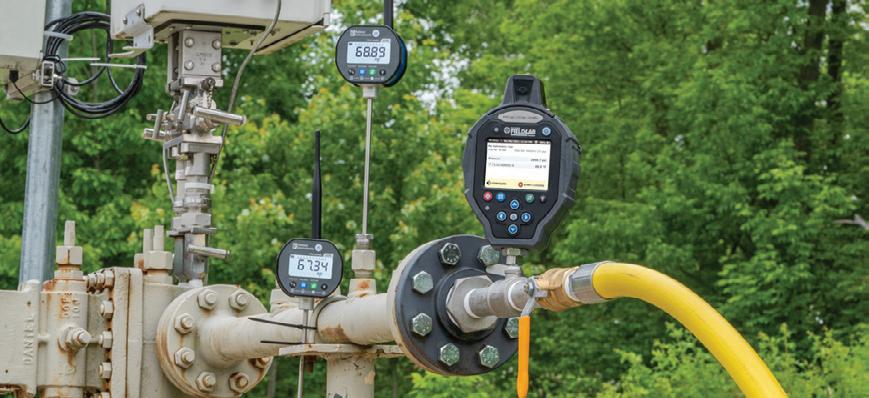
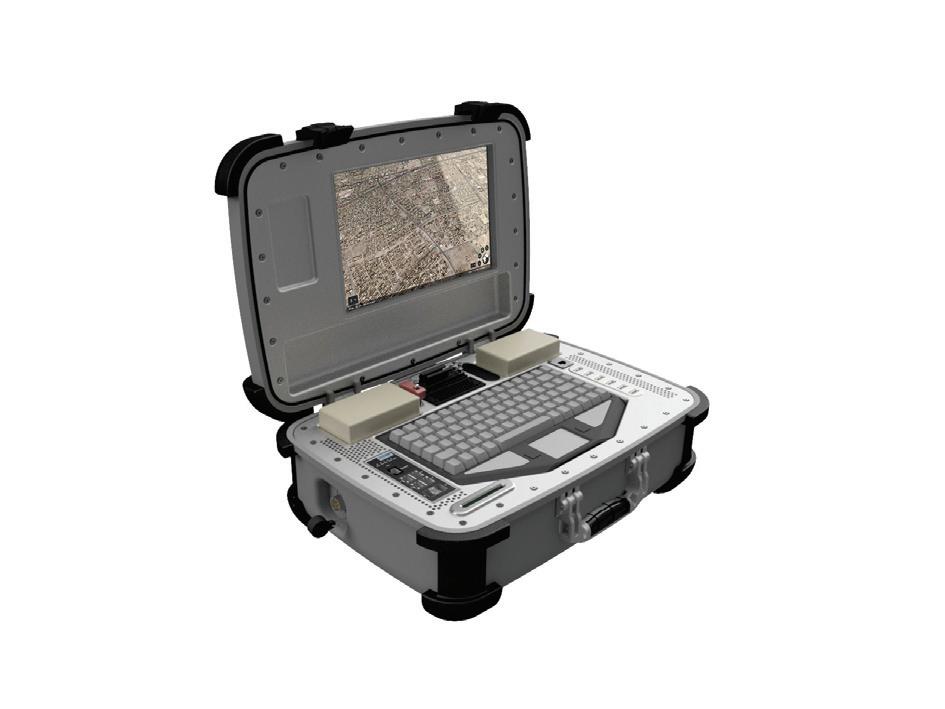
FieldLab Hydrostatic Test Kits
10X as accurate, extremely light weight, and none of the paper and pen hassles of chart recorders
• Log pressure up to 70 MPa at 0.1% of reading • Log temperature wirelessly from up to 100 meters away • Customize tests for any length of time and automatically shut down when finished • Download data via wireless or USB to your PC with included
FieldLab Desktop Software • View test data live on the FieldLab display • Create and customize reports to include all reference info, graphs of pressure and temperature readings, DUT data, customer info, and more • Record pressure and temperature per AS 2885 or international standards
To learn more visit ralstoninst.com/wnipt-htk or scan the QR code
PORTABLE EMBEDDED COMPUTER SYSTEM
The Crystal Group RE2512 is a portable embedded computer system with advanced thermal management and an all-aluminium chassis.
Features include an 8th/9th generation Xeon D Intel processor, a flexible configuration option with up to six removable drives (SSD). It has a standard 2950 battery, a 43.94 cm TFT LCD wide screen, keyboard and trackpad, and supports 3840 x 2160 resolution. The rugged embedded computer/ display is integrated into a protected water-resistant case for transportation.
Field-tested to withstand shock and vibration, extended temperature ranges, harsh elements and harsh environments, the system follows the Intel Roadmap to ensure access to the latest Intel chipsets and processors.
Compact construction provides a footprint of 22.5 x 40.13 x 49.53 cm.
Metromatics Pty Ltd
www.metromatics.com.au
ULTRASONIC SAFETY SENSOR SYSTEM
The Pepperl+Fuchs USi-safety ultrasonic sensor system is designed to work in challenging, dusty environments or in outdoor areas. The company says that regardless of material, surface structure and colours, reliable detection is always ensured. Up to two ultrasonic sensor units can be connected to the evaluation unit of the USi-safety ultrasonic sensor system. They each have a single-fault tolerance, two-channel structure. Reliable protection is therefore possible via each of the two independent sensor channels: a safe sensor system is provided even when only one sensor unit is connected.
One signal output and safe OSSD outputs in accordance with category 3 PL d are available for signal output to a safety controller for each connected sensor unit. Due to the ‘wide and shallow’ shape of the detection field, the system can be successfully used just above the floor or close to a wall.
Designed for monitoring in three-dimensional space, the optimal protection of machines, vehicles and persons is made possible by the shape of the sound beam: while conventional ultrasonic sensors emit acoustic signals in the form of a radially symmetrical sound beam, the USi-safety does so in an elliptical sound field. Due to the opening angle of ±17°/±5°, a particularly wide detection range is generated in one plane and a narrow detection range in the other plane.
Pepperl+Fuchs (Aust) Pty Ltd
www.pepperl-fuchs.com

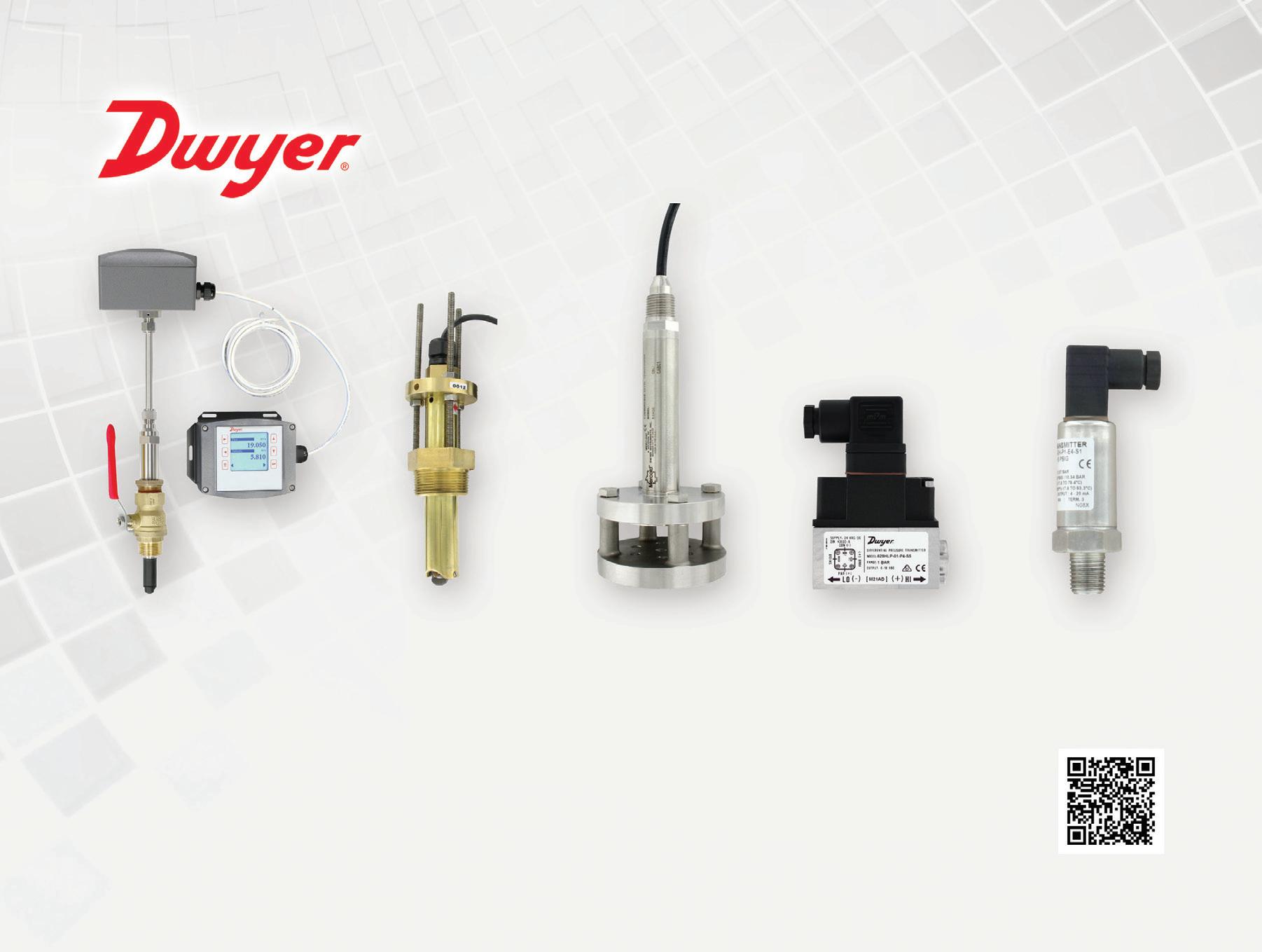






















Water plant drive upgrade eliminates electrical disturbances
AlburyCity Council in New South Wales operates two water supply systems to manage and treat raw water to provide clear, potable water. The raw water scheme uses three pump stations to deliver raw water to the water filtration plant, where it is treated into safe and secure drinking water for 55,000 residents in Albury and the surrounding region.
One section of the clear water reticulation system features a water-boosting pump station responsible for pumping to water storage tanks on a nearby hill. From here, the system uses gravity to distribute the treated water to nearby communities. It is on standby 24 hours a day, seven days a week, with actual pumping operations of between six hours per day in winter months and up to 16 hours per day during the summer months.
A result of many decades of steady development, the pumping station area now sits among various dwellings including a public school, as close as 20 m.
A problem was recognised in the power system each time the station’s pumps would start: it was causing an intrusive electrical disturbance whereby the lights in nearby buildings would dim each time the pumps were started or stopped.
In response, AlburyCity Council engaged ABB Channel Partner Remtron to conduct an analysis of the problem and provide a solution with long-term resolve. Remtron identified that the power quality disturbance was caused by the system’s installed soft starter motor controller.
“When the soft starter would activate, the associated soft starting action created unwanted distortion on the power network,” said Anthony Merrett, Automation Support Engineer – Drives and Power Quality for Remtron.
The electrical stress caused by harmonics and high starting currents pollute electrical networks with dirty power that can make connected equipment behave erratically. In severe cases they can cause damage to sensitive electronic equipment and interference in communication equipment, and give false readings on measurement devices.
It became Remtron’s goal to not only solve the network disturbances, but also assist the council in optimising its system’s overall infrastructure to reduce the risk of operational failure, extend equipment lifetime and increase energy efficiency.
Analysis of the existing soft starter and motor pumping system indicated that efficiency gains could be realised by using variable speed drive (VSD) control. A more efficient method to pump water is by using variable flow control and operating at the pump’s best efficiency point (BEP).
After installing a VSD, it was observed that when operating at a motor frequency of 45 Hz, water was pumping at 176 L/s, with a current consumption of 135 A. As a comparison, when the motor frequency was increased to 50 Hz, water was pumping at a higher flow rate of 210 L/s with a current consumption of 194 A. Remtron determined that although 50 Hz achieves a greater flow rate, because it’s not at the BEP it costs

Anthony Merrett from Remtron and Mitchell Palmer from AlburyCity Council beside ABB’s M2BAX IE3 high-efficiency motor. significantly more to pump. Decreasing the motor speed frequency from 50 to 45 Hz therefore results in higher pumping energy efficiency per litre of water pumped. A drive and motor package was identified to be the best solution for AlburyCity Council. It featured ABB’s ACQ580 ultralow harmonic (ULH) variable speed drives and ABB’s M2BAX IE3 premium efficiency motor. With a typical THD of less than 3%, the ACQ580 water-dedicated drives are engineered to reduce harmonics in the power network. By using this technology, the need for any additional filters or power quality equipment is eliminated. “We knew we would be saving energy by knocking a couple of Hz off the speed of a motor by installing a VSD, but through this project we now understand how to choose the best motor speed and more importantly all of the other benefits achieved by installing a VSD,” said Mitch Palmer, Electrical Supervisor for Construction and Maintenance at AlburyCity Council. “It’s essentially optimising the demands of the process with less wear and tear, lower pump cavitation and hydraulic stress through the pipes, just by being able to reduce motor speed by 10% via the drive,” said Merrett. “But first and foremost, it solves the original problem: there’s no more light flickering for any building in the area.” As a result of the upgrade, the council has already gained 20–30% in energy savings, which has resulted in reduced electricity running costs. “I really enjoyed working alongside Remtron and A1 Motors,” said Palmer. “Not only did they share their knowledge of equipment solutions and all things electrical, their mechanical comprehension was invaluable. The effects mechanical and electrical components can have on one another when there is a problem is profound, but equally so when all factors have been considered and aligned. The results are genuinely impressive.”
ABB Australia Pty Ltd
www.abbaustralia.com.au
One Giant Leap in Burst Disc technOLOGy…the Safety Cartridge
COMPACT COMPUTER

Powered by the latest 8th generation Intel Core i processor, the UNO-238 is said to be a high-performance computer in an optimised, compact form factor. To ensure available system resources for diverse applications, the mechanical design of the UNO-238 system has been optimised for easy RAM swapping.
To satisfy most factory usage requirements, the UNO-238 offers multiple I/O including two GbE ports, four USB 3.2 ports, two RS-232/422/485 ports, eight GPIO ports and one HDMI and DisplayPort. The provision of USB 3.2 Gen 2 enables twice as fast data transfer rates compared with USB Gen 1, delivering optimal efficiency for high computing performance. Additionally, to facilitate IoT applications, the UNO-238 can be integrated with additional LTE/Wi-Fi modules for enhanced connectivity and communication via the M.2 2230 (E-key) and M.2 3042/3052 (B-key) slots. The system’s versatile I/O ensures the UNO-238 can support diverse factory applications, such as factory automation, process automation and manufacturing execution system (MES) operations.
To accelerate the deployment of IoT applications and integrated solutions from the sensor node to the edge and the cloud, the UNO-238 is equipped with Advantech’s WISE-DeviceOn IoT device management software. This allows users to not only rapidly implement applications, but also maximise operational optimisation and transformation. With the built-in EdgeX architecture and container technology, the UNO-238 can be used to manage devices remotely to facilitate centralised management and OTA updates. This enables users to prevent failures and improve maintenance efficiency.
Advantech Australia Pty Ltd
www.advantech.net.au • One piece assembly - nO speciaL hOLDers requireD - instaLL Between existinG fLanGes • FOrward acting disc type 1”–8” Ø reverse Opti-gard disc type 1”–12” Ø • suitable FOr Full vacuum
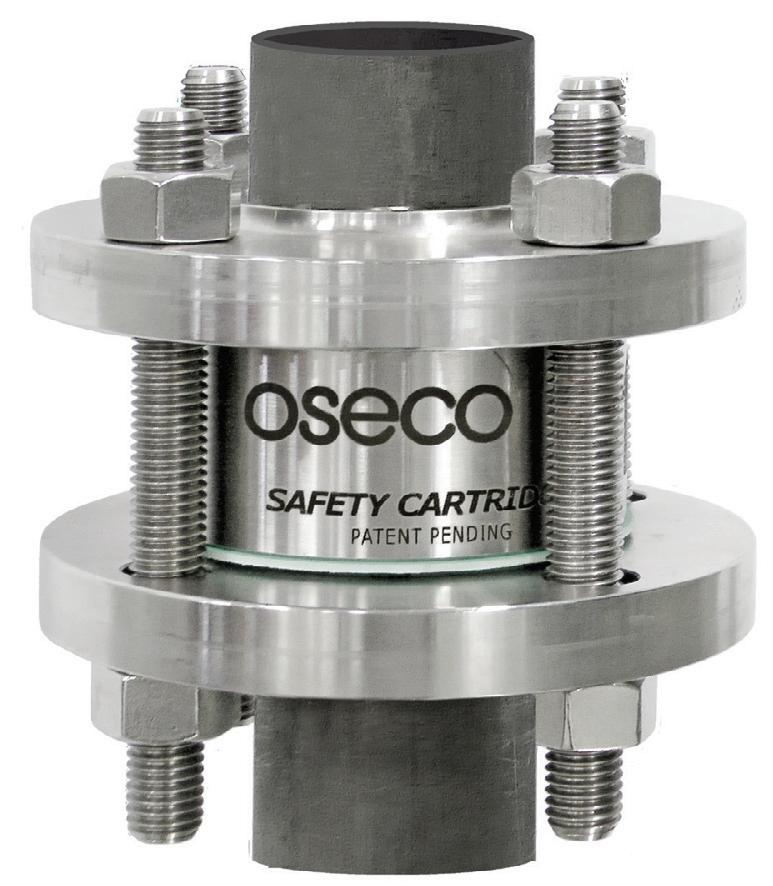
mOdel HPSR hiGh pressure cartriDGe 2500 – 6000psi

AUSTRALIAN AGENT & TECHNICAL SUPPORT We handle Pressure ®
Tel: (03) 9699 7355
9501P&SS-WNIPT
COMPRESSORS WITH INTEGRATED REFRIGERANT DRYERS
The oil-lubricated Boge screw compressors in the S-4 series between 55 and 110 kW now come with an optional integrated dryer. The refrigerant compressed air dryer is characterised by low pressure losses and has been fitted into the housing to ensure its compact design and flat surfaces with sharp lines could be maintained. The refrigerant dryer’s electronics and control systems are integrated directly into the device, which is only 400 mm longer than the non-dryer version. Boge says the S-4 screw compressor provides high delivery volumes with low power consumption. The core element of every individual compressor is the compression pump designed and produced in-house, and the integrated power transmission or direct drive with speed control. The optimally designed cooling air duct and the vertical oil separator, which has been isolated from any mechanical vibration, are designed to provide quiet operation.
The compressed air has a pressure dew point of 3°C and is suitable for use across a wide range of applications. One advantage of the S-4 devices is their reduced footprint in comparison with similar compressors with separate downstream refrigeration — having a different unit to dry the compressed air means increased installation costs for both the electrics and pipework.
Boge Compressors Ltd
www.boge.net.au


RUGGED TABLET PC
The Winmate M101S utilises an Intel Core i5-7200U processor at 2.5 GHz with an efficient cooling system to provide stable performance and low power consumption. The M101S supports the latest Windows 10 IoT Enterprise operating system for industrial application requirements and provides an alternative solution for those between general consumer-grade and rugged solutions. The M101S rugged tablet is designed to be tough, withstanding shock, vibration and drops of up to 1.3 m to concrete according to military standard MIL-STD-810G. With all-around rubber edges and covered I/O ports, the M101S is dust-tight and waterproof. The M101S offers GPS, GLONASS, Wi-Fi 802.11 a/b/g/n/ac, Bluetooth 5.0 and optional 4G LTE to enable mobile communications. With a built-in 8.0 MP camera on the rear side users can capture photos, videos and documents instantly or utilise the front 2.0 MP camera for applications such as self-video recording or video communications.
Backplane Systems Technology Pty Ltd
www.backplane.com.au

VISION SENSORS
Different parameters can play an important role in vision applications. Pepperl+Fuchs VOS vision sensors are said to offer a simple solution for the majority of requirements. With integrated optics, lighting and electronic analysis, all the key components are housed in one compact device.
The lenses of the VOS vision sensors can be selected to suit the measurement distance, size of the measurement object and test criteria. Many models feature an integrated ring light, but external lighting is also available in the form of side or rear lighting or light and dark field illumination. Standard interferences and a comprehensive range of accessories allow the sensor to be optimally adapted to the application.
Pepperl+Fuchs provides three different housing designs with the VOS series to meet the challenges of different applications: the VOS1000, the VOS2000 and the VOS5000.
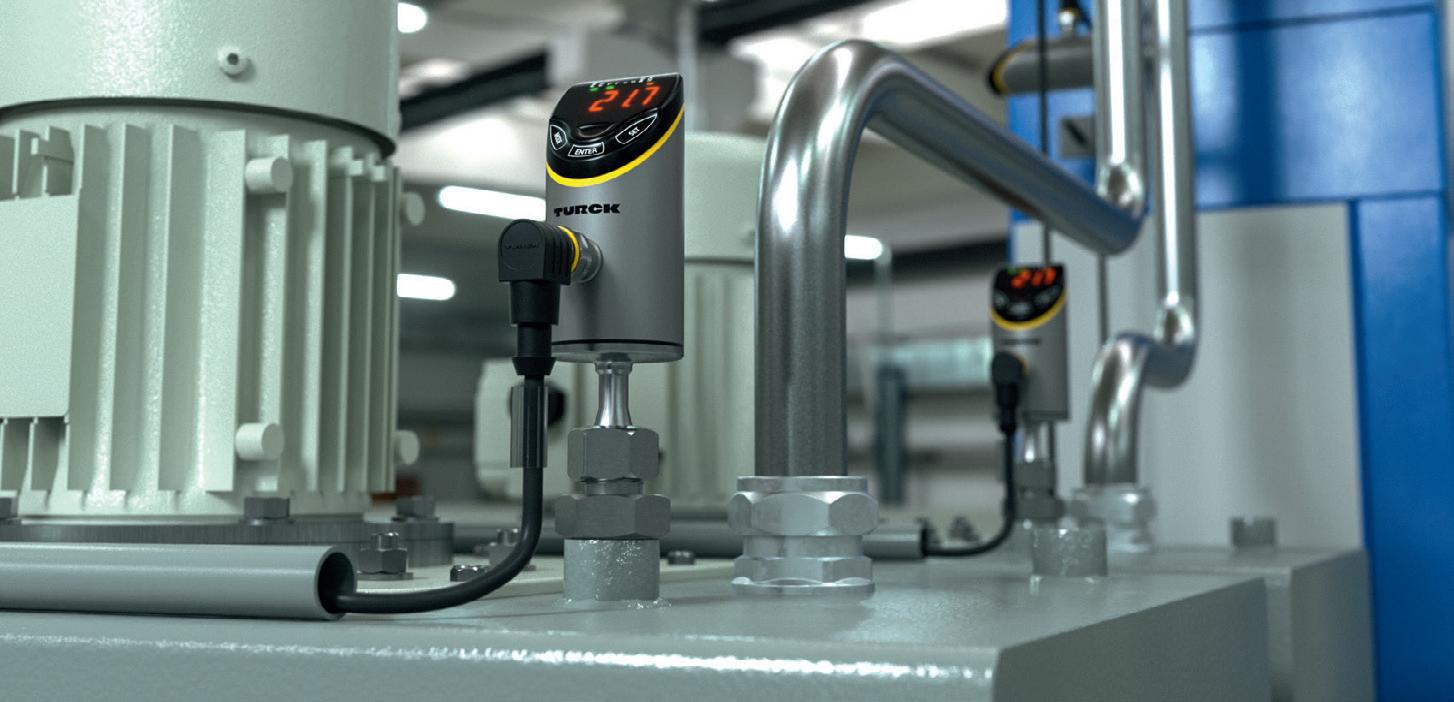
Pepperl+Fuchs (Aust) Pty Ltd
www.pepperl-fuchs.com Your Global Automation Partner
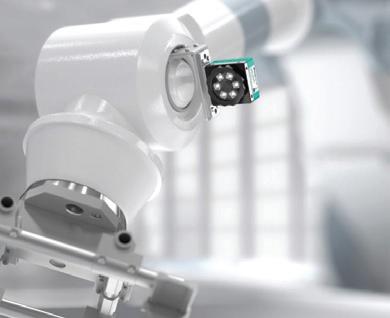
Improve Temperature Monitoring for Critical Quality Control Applications
Get more accurate temperature measurement of your media and ensure critical quality control with the new TS+. The TS+ temperature sensor from Turck is easy to program via an integrated multi-color display, ensuring your applications are up and running quickly. And with IO-Link, communicating key process data has never been easier.



